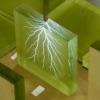Search the Community
Showing results for tags 'twsbi 580'.
-
OMAS as you already know is a 90 year old Italian manufacturer of fine writing instruments and related luxury goods. Founded in 1925, it does carry the name of its founder, Armando Simoni. OMAS as it is, stands for Officina Meccanica Armando Simoni, which means workshop for machinery And initially f...
- 31 replies
-
Hi, I was thinking about buying my first TWSBI pen and I'm confused about which one I should buy. I've shortlisted the TWSBI Eco, TWSBI 580 and TWSBI Vac 700. If it were up to you, which pen would you buy and recommend?
- 22 replies
-
- twsbi
- fountain pen
- (and 8 more)
-
I am trying to think a little ahead, here, and get an idea of a goal I want to start shooting for. I am thinking of getting my next fountain pen in the $50-$100 range in the next several months. Currently I own a Pilot Metro (F), Pilot 78G (B ), and a TWSBI Eco (EF). I tend to write small, and ge...
-
All, I'm in a dilemma with my current TWSBI pen. Bottom line: I have a Vac Mini which I enjoy but am wondering if I would appreciate a 580 more. I love the design of most of TWSBI's pens (Precision notwithstanding...) and I like having a demonstrator with swappable nib units (though I have yet t...
-
Do you have any pen and ink recommendations for book signings? My book of poetry just came out, and I've done two books signings with my Platinum Plaisir (fine) and Noodler's Baystate Blue. It actually worked out great, but I'd like to try out some other colors and would like to use some nicer pen...
- 45 replies
-
- baystate blue
- twsbi 580
- (and 5 more)
-
HI. I am a school teacher working and living in South Korea. I have three pens: a TWSBI 580, Pelican M800, an artisan turned deer-horn IPN and a Shaefer Calligraphy pen from the set I got when I was 13 years old. I started to use fountain pens regularly in University where I would buy $1 founta...
- 13 replies
-
- pelican 800
- twsbi 580
-
(and 1 more)
Tagged with:
-
My first review here at FPN. After reading a lot about the TWSBI pens on FPN, I was really tempted to try one of them. So, I purchased the recently released TWSBI Diamond 580 with a medium nib (and later on bought an EF nib too) directly from TWSBI. The pen cost me $80 ($50+$30 for shipping). An a...
-
Why the heck should I pay fifty dollars for a cheap plastic pen?—those were my initial thoughts as I fresh review after review raving about how magnificent a pen the new TWSBI was. This was 2011, when the TWSBI Mini had just flooded the market, generating a parade of followers with size rivaling tho...
-
How broad and wet is the twsbi bold nib? Most of the reviews here are for the other nib sizes. I've got a twsbi 580al with bold nib coming my way in about a week, so I was wondering. For comparison, I've been using my only fp so far (platinum 3776 century m nib).
-
Inspired by a post on instagram by fpgeeks (http://instagram.com/p/vbuDA_PvwT/?modal=true) about fitting a Nikko G nib on a TWSBI 540, I decided to try it out with my TWSBI 580. Here are the steps: 1) procure Nikko G nibs Easy enough, just ordered them on ebay and received them in about a week...
-
Among all new pens, ignoring marketing b.s. (example MBs) and ignoring heavily ornamented pens (diamond encrusted, intricately decorated: Dunhill-Namiki Sakura Rose), which pens do you think really demonstrate a technical achievement in pen technology?
- 53 replies
-
- lamy 2000
- pilot vanishing point
-
(and 2 more)
Tagged with:
-
Can anyone tell me if the TWSBI stubs for the mini are the same width as the stubs for the 580? I recall reading a post from someone saying that the 580 1.1stub is closer to 1.3mm. Can anyone corroborate this? My real question is: how big is the 1.5 stub for 580? Going on the supposition that th...
-
Replacing Lamy Safari - Twsbi 580?
AnonymousMuggle posted a topic in Fountain & Dip Pens - First Stop
Hey everyone! First of all, I'm new here. I've lurked around a bit and I actually thought I'd made an account before but it seems not under a name I can remember, so… But I'm not a regular Internet forum poster person, so if I'm breaking any rules posting this here, sorry! Anyway, here's the si... -
I'm looking for a pen that costs around £40(price of converter included). I would prefer it to be a wet writer, or just not dry. I'm considering the Faber-Castell Ambition, TWSBI 580, Parker Urban and Lamy Studio Any thoughts or suggestions?
- 22 replies
-
Enjoy: http://i42.tinypic.com/imjdj9.jpg http://i40.tinypic.com/30sy4gi.jpg
-

Behold The (Drum Roll Please!)...tws... Pula 580
pen_addict posted a topic in Fountain & Dip Pens - First Stop
Hello all, I've been loitering around FPN for a while but this will be my first attempt at making a "real" post! After much debate about where to stick this, I decided that this was a better fit than either the TWSBI or stipula forums... (the pictures aren't great but hey that's what i get for usi... -

Twsbi 580 Or Italix Parsons Essential?
N2theBreach posted a topic in Great Britain & Ireland - Europe
My next pen is going to cost around $50 and I'm considering the 580 and the Parsons. They may seem an odd pair to compare. I'm attracted to the Parsons because of the tuned nib and the classic look. I'm attracted to the 580 because of the piston fill and its extra capacity. I also like the abil...























